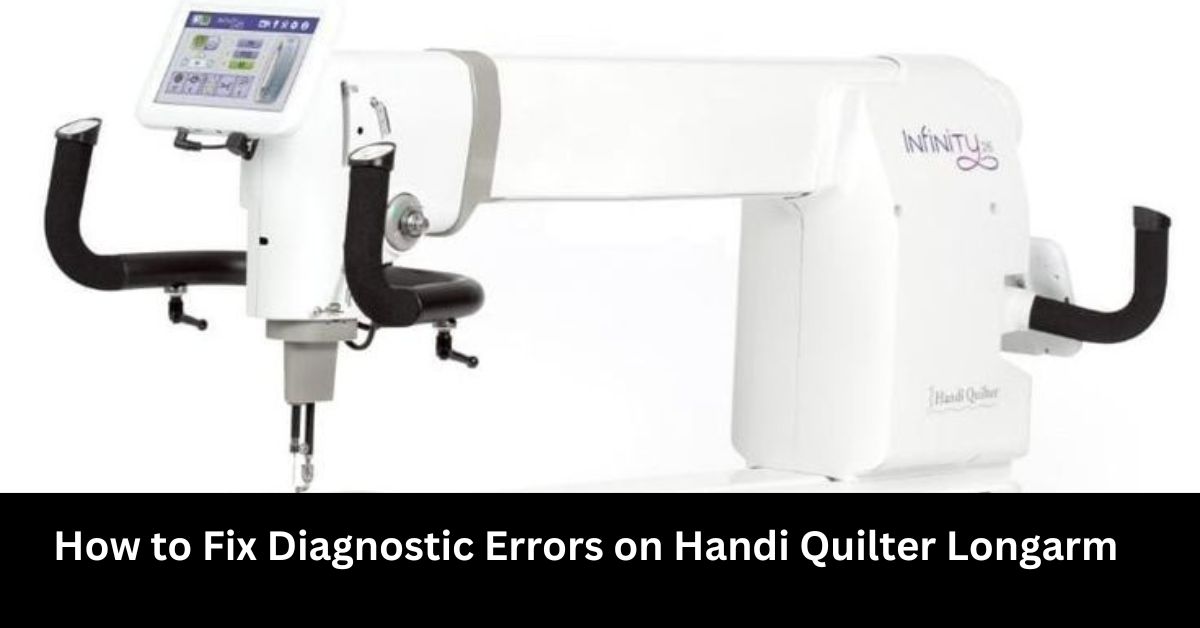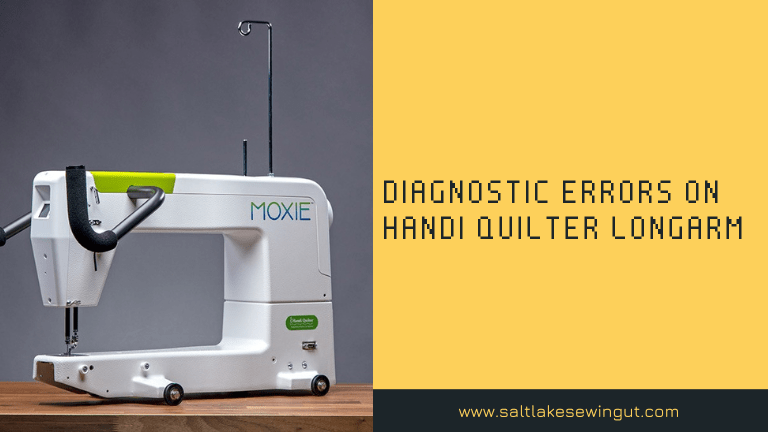As a quilter, you know that your Handi Quilter longarm machine is a crucial tool in your craft. It helps you create beautiful and intricate designs that are unique to your creativity. However, just like any other piece of machinery, your longarm machine may experience diagnostic errors that can hinder its performance. In this article, we will take a closer look at how to fix diagnostic errors on Handi Quilter longarm machines.

Do you want to ensure your Handi Quilter longarm machine is running at optimal performance? Learn how to fix diagnostic errors in this comprehensive guide.
Handi Quilter longarm machines are renowned for their precision and accuracy. They offer quilters the ability to create beautiful and intricate designs quickly and easily. However, like any other machine, they are prone to diagnostic errors that can be frustrating to troubleshoot. These errors can range from minor issues, such as thread breakage, to more severe issues, such as software malfunctions. Understanding how to fix these errors is crucial to keeping your Handi Quilter longarm running smoothly.
Common Diagnostic Errors on Handi Quilter Longarm Machines
Before we dive into how to fix these errors, let’s take a look at some of the most common diagnostic errors that Handi Quilter longarm machines experience.
- Thread breakage: This occurs when the thread breaks while quilting. It can be caused by several factors, including improper tension, incorrect needle size, or the use of low-quality thread.
- Needle breakage: This is when the needle breaks while quilting. It can be caused by several factors, including using the wrong needle size or a dull needle.
- Machine jamming: This is when the machine becomes jammed, and the needle stops moving. It can be caused by several factors, including a buildup of lint, thread, or fabric in the machine.
- Stitching issues: This is when the stitching is uneven, skipped, or not formed correctly. It can be caused by several factors, including improper tension, using the wrong needle size, or incorrect bobbin placement.
How to Fix Diagnostic Errors on Handi Quilter Longarm Machines
Now that we have identified some of the most common diagnostic errors on Handi Quilter longarm machines let’s dive into how to fix them.
- Thread breakage: To fix thread breakage, first, ensure that the tension is set correctly. Next, check the needle size to ensure that it is appropriate for the thread being used. Finally, use high-quality thread to prevent breakage.
- Needle breakage: To fix needle breakage, ensure that the needle size is appropriate for the fabric being used. Additionally, ensure that the needle is not dull and that it is inserted correctly.
- Machine jamming: To fix machine jamming, first, turn off the machine and unplug it. Next, remove any excess thread, lint, or fabric from the machine. Finally, ensure that the bobbin and needle are inserted correctly.
- Stitching issues: To fix stitching issues, first, ensure that the tension is set correctly. Next, ensure that the needle size is appropriate for the fabric being used. Finally, ensure that the bobbin is inserted correctly.
Preventative Maintenance for Handi Quilter Longarm Machines
Preventative maintenance is crucial to keep your Handi Quilter longarm running smoothly. Here are some tips to help you prevent diagnostic errors:
- Clean your machine regularly: Use a lint brush to remove any lint or thread that has accumulated in the machine.
- Use high-quality thread: Using high-quality thread can prevent thread breakage and stitching issues.
- Change your needle regularly: Needles can become dull over time, which can cause needle breakage and stitching issues. Make sure to change your needle after every 8-10 hours of use.
- Lubricate your machine: Proper lubrication can prevent jamming and other mechanical issues. Follow the manufacturer’s instructions for lubricating your machine.
Conclusion
In conclusion, diagnostic errors can be frustrating, but they are a normal part of using any machine, including your Handi Quilter longarm. By understanding the most common errors and how to fix them, you can keep your machine running smoothly and prevent any major issues. Remember to also perform preventative maintenance regularly to keep your machine in top condition. With these tips, you can enjoy the benefits of your Handi Quilter longarm for years to come.
FAQs
What should I do if I cannot fix the diagnostic error on my Handi Quilter Longarm machine?
If you are unable to fix the diagnostic error on your Handi Quilter Longarm machine, it is recommended that you seek professional help. Contact Handi Quilter customer service for assistance or visit a local repair shop that specializes in longarm machines. Attempting to fix the problem without the proper knowledge or tools can lead to further damage and costly repairs.
How often should I get my machine serviced?
It is recommended that you get your Handi Quilter Longarm machine serviced at least once a year. However, the frequency of service may depend on how often you use the machine and the types of projects you work on. If you notice any unusual sounds, vibrations, or performance issues, it is best to get your machine serviced immediately.
Can I fix diagnostic errors on my Handi Quilter Longarm without professional help?
While some diagnostic errors on Handi Quilter Longarm machines can be fixed without professional help, it is best to approach the issue with caution. Only attempt to fix diagnostic errors if you have the necessary knowledge and tools. Attempting to fix the issue without proper knowledge or tools can lead to further damage and costly repairs.
How long should I expect my Handi Quilter Longarm machine to last with proper maintenance?
With proper maintenance and care, a Handi Quilter Longarm machine can last for many years. The lifespan of the machine may depend on factors such as frequency of use, types of projects, and how well the machine is maintained. Regular cleaning, maintenance, and proper use of the machine can help extend its lifespan.

